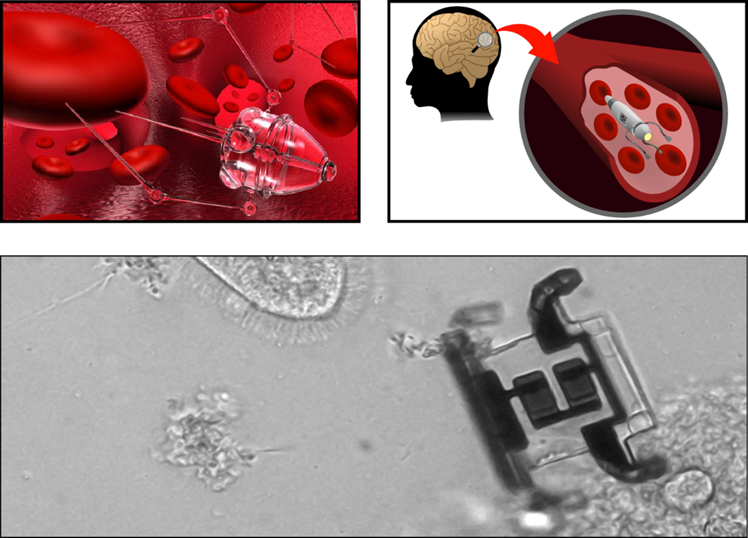Theme: | Localization/Communication/Propagation |
Application: | In-body localization and sensing |
Contact Person: | |
External collabolator: | Surgical Robotics group, Yu-Hsiang Li |
Intorduction: | Miniaturized medical robots (MMRs) are seen as an alternative to conventional medical treatments, which can conduct therapeutic procedures in a more targeted region. The key technology that enables MMRs to navigate through the human body and reach the unreachable regions of interest, is in-body localization. Locating the MMRs is the first step towards precise control and navigation of these robots, and completing complex therapeutic procedures inside the human body. Several ways of tracking and localizing MMRs have been explored over the decades, including optical tracking, magnetic tracking, ultrasound tracking, and electrical impedance tomography. However, the aforementioned tracking technologies have either limitations on accessibility, tracking resolution, tracking speed, or specific material requirements for the tracking objects.
|
Description: | In this project, we would like to investigate use of microwave signals for the purpose of detecting and localizing MMRs inside a human body. This will involve answering the following questions.
Microwave frequencies range from several kHz to tens of GHz. On one hand, at lower frequencies electromagnetic waves have better penetration properties. On the other hand, in order to localize very small objects with enough precision one requires a small wavelength (high frequency) and a large bandwidth. This trade-off needs to be carefully examined in order to make a decision on which frequency range has the largest potential for the application at hand.
There are multiple ways one could use microwaves for object detection and localization. From classical radar-based systems to direction finding using narrow-beam antennas to nonlinear sensing. Which approach is the best given the small sizes and specifics of the MMRs movement is another question that requires investigation.
The study will include simulation-based analysis using Matlab and/or EM simulation environment as well as laboratory measurements. |
Requirements: | You are a motivated student looking for a Master thesis topic in the field of microwave sensing. You have interest in practically-oriented work, have basic knowledge and interest in microwaves, EM propagation, and signal processing, and enjoy working in the lab environment. |
Additional Info |

